I’ve been too busy too long, but I have accomplished one thing the last few weeks: with another artist, Kerry Corcoran, I submitted a proposal for an exhibit at a local public space. I got the idea when I realized that Kerry and I found the same subjects appealing: trees, especially bare ones. But we work in such different media—printmaking and photography—that the show becomes as interesting for the contrast of approach as for the intrinsic interest of the subject. Following are images from the abbreviated application (some of mine may look familiar from my Cottonwood series); the actual show (if accepted) would have about twice as many. For the moment, we’re calling it In Praise of Trees.
1
2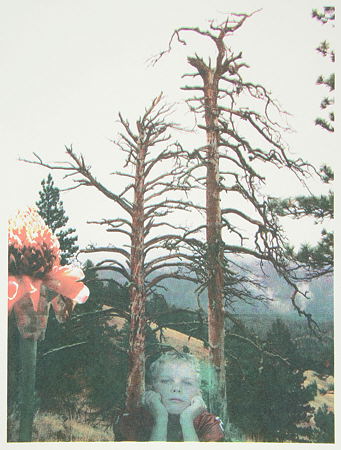
3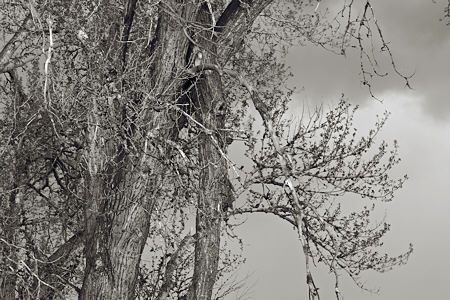
4
5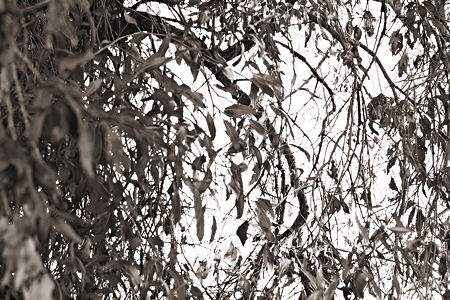
6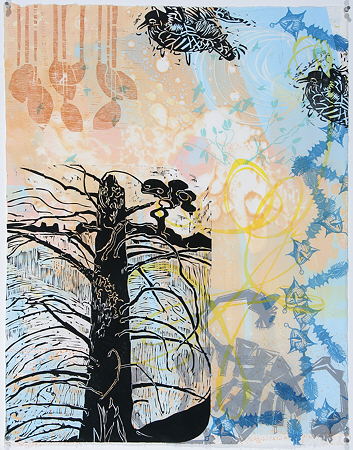
7
8
9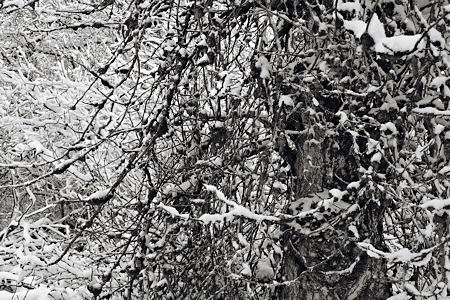
10
Here’s the statement we put together:
Trees matter. They root deeply in the earth and reach their limbs to the sky and move with the wind. They link branches with their neighbors or stand alone. They have histories and personalities, proclivities and idiosyncracies. In short, trees possess character. There’s something there you can get to know and perhaps love. Doesn’t everyone have a favorite tree?
This exhibit presents some trees we care about, ones we know well and revisit in imagination and in the world. We make them ours by making them art. The two of us work in different media: printmaking and photography. We use gestures of the hand or technical controls; build up elements into a personal representation, or leave elements outside of the captured frame; complement with subjective colors or remove objective color. Despite these different approaches, we recognize a common interest, a shared appreciation and understanding of trees. For both of us, trees matter. And for you?
The question is whether this combination amounts to anything more than the sum of its parts. Do these pictures talk to each other, or past each other? What does it take to make a show like this work?

Steve,
Welcome back and excellent reason for having been absent. Fabulous combination of images. I will absorb them over the day. How fortunate you are in having established a collaboration.
I, too, have special trees. One of the little douglas firs that I transplanted close to our house is named Karl. It grew up from a cutey to a respectable, strong size. Then there is an ironwood that we transplanted to the vicinity of the kitchen window. As a small tree, it had beautiful branches reaching out horizontally. To make it survive, they had to be trimmed and the tree languished for a couple of years (Ironwoods, possessing the hardest wood here in MI, are not supposed to be transplantable, they are only grown from seed). Now the tree has a strong, little crown, growing, very slowly as ironwoods have a habit of doing.
Steve,
As I look at your collation of images, I can see that you’ve grouped these in two’s (or at least that’s what I see — you may have had other things going on). As such, they definitely belong together. If I were presenting them in an exhibit, I would set them as groups, so those that spoke to each other were close together. In other words, yes, these images speak to one another.
Mixing modes in visual arts seems to me to be fraught with challenges and can go very wrong. Photography particularly can wipe out anything exhibited alongside it. But here, the prints hold their own and, as you say, talk to the photographs. The conversations are interesting, as in the first couple of images: so you think this tree, all snowcovered, is aloof and solitary — well, maybe, but “thinking” can link it to warmer life, and life goes on, young goes old, flowers and seeds come and go. The cold forlorn is only a part of the cycle of our imagination.
I could play the same kind of mad song about the other groupings, but won’t bore you with them. Perhaps, just for fun, you could provide writing materials for people to use to comment on what one art piece in a grouping is saying to the other. I suggest this in part because when I start writing about something visual, I have to slow down and look more closely. That’s when I start seeing the art rather than the image. I’m imaging hordes of schoolchildren, seated on the floor at the gallery……… (and with that, I’ll stop!)
Greetings again.
Your and Kerry’s imagery appear to complement each other well in this setting, and juxtaposed as you have them. I would assume that the work will be interleaved in the show. I have to agree that size-for-size, your black and white photos may jump more vigorously from the wall.
I can certainly see trees as a uniting theme here, but you both seem to possess strong enough sensibilities that the theme might needs be little more than a visual hand shake. I have the feeling always that you are looking through your subject matter toward something more universal, while Kerry appears to use his trees as a kind of lumber. A little past each other.
We put in a Japanese weeping cherry this last summer, while otherwise laying waste around the property to vegetation great and small. This tree was located with great care and a certain divination and carries our hopes and dreams for a rejuvenated landscape.
I have to admit that it never occurred to me that the photographs might be visually stronger than the prints, as was mentioned as a possibility. Kerry’s prints are larger as well as more colorful, and I was rather afraid she’d put me at a disadvantage in that regard (not that I’m actually concerned).
June: an intriguing idea about having viewers give voice to the pictures. I’d been wondering whether artist’s notes on each might be desirable, but your thought is much more appealing.
Jay, I think you’re quite right that Kerry’s images feel more personal than my photographs. It seems to me to be the nature of the medium that she makes something of the trees, rather than simply showing them and leaving it more to the viewer to associate ideas or emotions.
Birgit, thank your for the stories of your trees. And Jay, I wish you well with your cherry, may you have no ice-storms for a long, long time.
The prints are appealing in their colorfulness.
The black and white images are more stimulating to my mind.